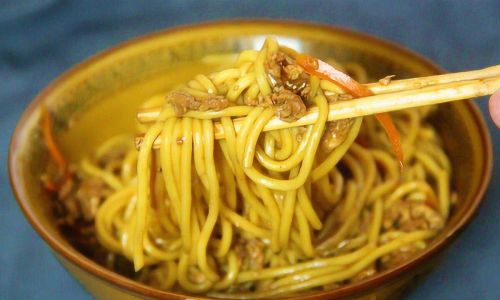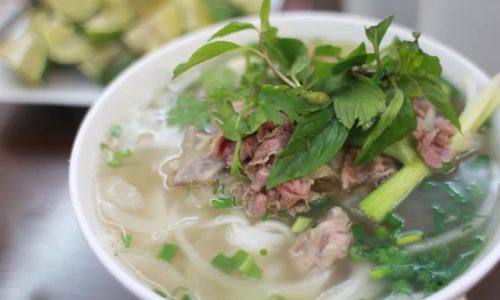Introduction
There’s something undeniably comforting about twirling a forkful of noodles coated in a rich, savory meat sauce. Whether served over spaghetti, ramen, or hand-pulled noodles, a well-crafted meat sauce can transform a simple meal into a culinary masterpiece. While store-bought options exist, nothing compares to the depth of flavor and satisfaction of a homemade sauce. This guide will walk you through the process of creating a versatile meat sauce from scratch, focusing on technique, ingredients, and customization. By the end, you’ll have the knowledge to adapt this recipe to your taste preferences and dietary needs, ensuring every bowl of noodles feels like a celebration.
The Foundations of a Great Meat Sauce
A stellar meat sauce begins with three pillars: quality ingredients, patience, and balance. The meat provides umami and texture, while aromatics like onions, garlic, and herbs add layers of complexity. Tomatoes, whether fresh or canned, contribute acidity and sweetness, and simmering time allows flavors to meld and deepen. Let’s break down each component.
Choosing the Right Meat
The meat you select will define the sauce’s character. Ground beef is a classic choice, offering a robust, meaty flavor. For a leaner option, consider ground turkey or chicken. For a richer, more decadent sauce, combine beef with pork or veal. If you prefer a coarser texture, opt for diced meat instead of ground—this works particularly well with lamb or beef chuck.

Pro Tip: For added depth, sear the meat in batches to ensure proper browning. Overcrowding the pan will cause steaming, not caramelization, resulting in a bland sauce.
Aromatics: The Flavor Base
Onions, garlic, and celery form the holy trinity of aromatics. Carrots add sweetness, while bell peppers (red or green) contribute a subtle earthiness. Finely dice these vegetables to ensure they melt into the sauce during cooking. For an Italian twist, add a touch of pancetta or bacon; for Asian-inspired sauces, incorporate ginger or lemongrass.
Tomatoes: Fresh vs. Canned
Fresh tomatoes are ideal in peak season, but canned tomatoes (whole peeled, crushed, or San Marzano varieties) offer consistent flavor year-round. Tomato paste adds concentrated sweetness and umami, while a splash of red wine or vinegar balances acidity. For a smoky note, roast the tomatoes before blending them into the sauce.
Herbs and Spices
Bay leaves, oregano, thyme, and basil are classic choices, but don’t shy away from experimenting. Cumin, smoked paprika, or even a pinch of cinnamon can elevate the sauce. Fresh herbs like parsley or cilantro are best added at the end to preserve their brightness.
Step-by-Step Preparation
Browning the Meat
Heat a large, heavy-bottomed pot over medium-high heat. Add a drizzle of olive oil or a pat of butter. Once hot, add the meat in a single layer, breaking it into small pieces with a wooden spoon. Resist the urge to stir immediately—allowing the meat to caramelize creates a deeper flavor. Cook until browned, then transfer to a plate, leaving the fat behind.
Sautéing Aromatics
In the same pot, reduce the heat to medium and add the diced onions, carrots, and celery. Sauté until softened and golden, about 8–10 minutes. Stir in minced garlic and cook for another 2 minutes until fragrant. This step builds the sauce’s aromatic foundation.
Deglazing the Pan
Pour in a splash of red wine, beer, or broth to scrape up the browned bits (fond) from the bottom of the pot. This process, called deglazing, infuses the sauce with intense flavor. Simmer until the liquid reduces by half.

Adding Tomatoes and Liquid
Stir in the tomatoes, tomato paste, and any additional liquid (broth, water, or milk for creaminess). Return the browned meat to the pot. Bring to a simmer, then reduce the heat to low. Partially cover the pot and let the sauce cook gently for at least 1–2 hours. Stir occasionally to prevent sticking.
Seasoning and Adjusting
Taste the sauce halfway through cooking and adjust seasoning with salt, pepper, sugar (to balance acidity), or a squeeze of lemon juice. For spiciness, add red pepper flakes or fresh chili. If the sauce is too thick, thin it with broth; if too thin, simmer uncovered to reduce.
Finishing Touches
Just before serving, stir in fresh herbs, a knob of butter, or a splash of heavy cream for richness. For a textural contrast, toss in sautéed mushrooms, olives, or sun-dried tomatoes.
Tips for Perfecting Your Sauce
- Low and Slow: The longer the sauce simmers, the more complex the flavor. Aim for 2–3 hours if time permits.
- Fat Content: Lean meats may require a bit of added fat (butter or olive oil) to prevent dryness.
- Acid Balance: If the sauce tastes flat, a pinch of sugar or a splash of vinegar can brighten it.
- Freezing: Portion leftover sauce into freezer-safe containers for up to 3 months. Thaw overnight in the refrigerator before reheating.
Variations to Explore
Italian-Style Ragù
Add milk or cream during the last 30 minutes of cooking for a velvety texture. Serve with wide pappardelle noodles and grated Parmesan.
Spicy Sichuan-Inspired Sauce
Incorporate doubanjiang (fermented chili paste), Sichuan peppercorns, and black vinegar. Toss with fresh wheat noodles and garnish with chopped scallions.
Vegetarian “Meat” Sauce
Substitute the meat with crumbled tempeh, lentils, or mushrooms. Boost umami with nutritional yeast or miso paste.

Mexican-Style Salsa de Carne
Add chipotle peppers in adobo, cumin, and smoked paprika. Serve over rice noodles with avocado and lime wedges.
Japanese Wafu Sauce
Mix ground pork with sake, mirin, soy sauce, and grated ginger. Simmer with dashi broth and serve over udon noodles.
Common Mistakes to Avoid
- Overcrowding the Pan: This prevents proper browning and leads to a greasy sauce.
- Skipping the Simmer: Rushed cooking results in a flat, one-dimensional flavor.
- Under-Seasoning: Taste and adjust throughout the process—salt is crucial for flavor development.
- Using Low-Quality Tomatoes: Invest in good-quality canned tomatoes; they’re the backbone of the sauce.
Pairing Suggestions
- Spaghetti: The classic pairing. Opt for a thicker sauce to cling to the noodles.
- Ramen Noodles: For a fusion twist, top with a soft-boiled egg and nori.
- Zucchini Noodles: A low-carb option that pairs well with lighter sauces.
- Rice Noodles: Soak them in warm water before tossing with sauce for even coating.
Conclusion
Creating the perfect meat sauce is an act of love—one that rewards patience and creativity. Whether you’re adhering to tradition or experimenting with global flavors, the key lies in balancing ingredients and allowing time to work its magic. This sauce isn’t just a meal; it’s a canvas for your culinary imagination. So, tie on your apron, gather your ingredients, and let the sizzle of the pan and the aroma of simmering tomatoes guide you. Your noodles (and your dinner guests) will thank you.






0 comments